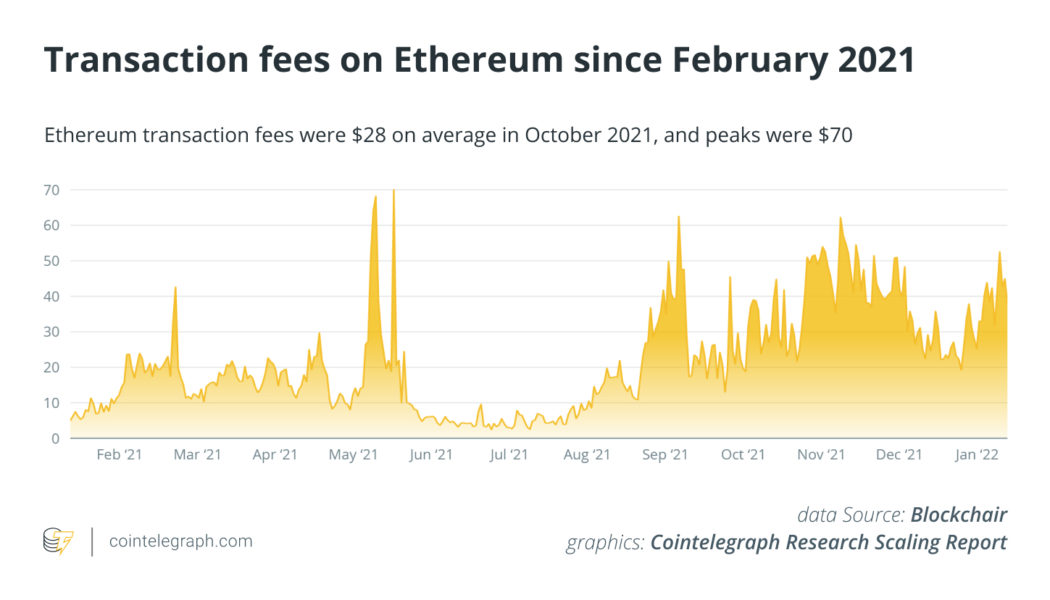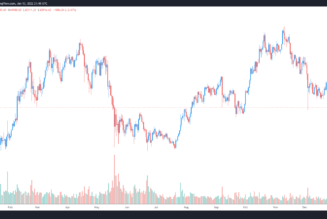Ethereum 2.0 has been a highly anticipated development in the crypto industry. A recent Cointelegraph research report asks if Ethereum is still on track to defend its crown as the prime network backing the decentralized finance world.
The report cuts through popular misconceptions investors may hold and offers a comparative analysis of Ethereum and its competitors. Meanwhile, the Ethereum foundation rebranded the Eth2 project at the start of this year. Is it trying to manage expectations or educate?
New talk of consensus and execution layers
In a blog post in January, the Ethereum foundation stated that developers had been moving away from the Eth1-Eth2 terminology since late 2021. Instead, Eth1 will now be called the “execution layer” and Eth2 the “consensus layer.” This is not a minor twist toward more technical language. It is an attempt at expectation management due to common misconceptions.
For people only superficially familiar with Ethereum, the name Eth2 might suggest there will be a single large update that magically fixes the problems and notoriously high gas fees by switching from an energy-intensive proof-of-work (PoW) consensus mechanism to proof-of-stake (PoS). However, this is a dangerous oversimplification.

The free scaling report published by Cointelegraph Research provides a sound overview of Eth2. It gives detailed information on the planned technical updates and what they mean for Ethereum’s developers, competitors, and investors. The report is free to access on the Cointelegraph Report Terminal.
Download the full report here, complete with charts and infographics.
The complexity and risk of migrating a multi-billion dollar blockchain project from one consensus mechanism to another have meant that the roll-out of Eth2 has been slower than expected and the Ethereum foundation initially gave no definite timeline. In the meantime, up-and-coming competitors with scalable projects have been vying to take away market share from Ethereum.
The report also assesses these challenges in detail. On 74 pages, it offers a comparative analysis of the major players such as Solana, Polkadot, Algorand and Radix which are trying to snatch the top spot in DeFi. Curated by our industry-leading team of researchers, it provides a balanced view of the big picture and manages to cut through the noise of social media and the daily press.

Eth2 — Understanding a nuanced reality
The switch from Eth1 to Eth2 is better thought of as a carefully engineered series of upgrades that will slowly transition the blockchain to its envisioned future. Eth2’s main chain, the PoS Beacon chain, was already launched in December 2020. The merging of Eth1 with the Beacon chain is expected in Q2 or Q3 of 2022.
Although to a casual observer this might mean that all of Ethereum’s problems will be solved, the update later this year is not likely to have a big impact on gas fees or the capacity of the network. While PoS will significantly reduce the energy consumption of Ethereum, improved scalability will only come once data sharding is introduced in 2023. Sharding was initially going to happen before the merge but has been delayed under the new timeline. The official rationale for this is that scalability is now a lesser priority because layer-2 solutions have become available.
The new terminology of “consensus layer” and “execution layer” seeks to banish talk of a mythical point in time when Ethereum’s problems will instantaneously disappear. Associating Eth1 with the consensus layer and Eth2 strictly with the execution layer also shifts the focus from the third so-called data availability layer that would have been subject to the delayed data sharding update.
With the merge scheduled for later this year, it may be tempting to think that the days of alternative decentralized finance (DeFi) blockchains are numbered. However, it is important for investors not to jump to conclusions prematurely. As Eth2 will not be an instantaneous magic fix, keeping track of the competitive landscape remains invaluable.
This article is for information purposes only and represents neither investment advice nor an investment analysis or an invitation to buy or sell financial instruments. Specifically, the document does not serve as a substitute for individual investment or other advice.
 [flexi-common-toolbar] [flexi-form class=”flexi_form_style” title=”Submit to Flexi” name=”my_form” ajax=”true”][flexi-form-tag type=”post_title” class=”fl-input” title=”Title” value=”” required=”true”][flexi-form-tag type=”category” title=”Select category”][flexi-form-tag type=”tag” title=”Insert tag”][flexi-form-tag type=”article” class=”fl-textarea” title=”Description” ][flexi-form-tag type=”file” title=”Select file” required=”true”][flexi-form-tag type=”submit” name=”submit” value=”Submit Now”] [/flexi-form]
[flexi-common-toolbar] [flexi-form class=”flexi_form_style” title=”Submit to Flexi” name=”my_form” ajax=”true”][flexi-form-tag type=”post_title” class=”fl-input” title=”Title” value=”” required=”true”][flexi-form-tag type=”category” title=”Select category”][flexi-form-tag type=”tag” title=”Insert tag”][flexi-form-tag type=”article” class=”fl-textarea” title=”Description” ][flexi-form-tag type=”file” title=”Select file” required=”true”][flexi-form-tag type=”submit” name=”submit” value=”Submit Now”] [/flexi-form]










Tagged: crypto blog, Crypto news, Eth2, Ethereum, Migration